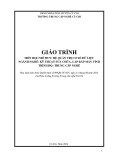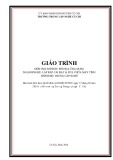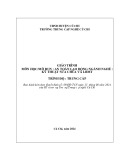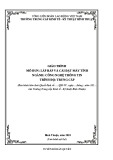
Computer Architecture
Chapter 2
Instruction Sets
Prof. Jerry Breecher
CSCI 240
Fall 2003

Chap. 2 - Instruction Sets 2
Introduction
2.1 Introduction
2.2 Classifying Instruction Set Architectures
2.3 Memory Addressing
2.4 Operations in the Instruction Set
2.5 Type and Size of Operands
2.6 Encoding and Instruction Set
2.7 The Role of Compilers
2.8 The MIPS Architecture
Bonus

Chap. 2 - Instruction Sets 3
Introduction
The Instruction Set Architecture is that portion of the machine visible
to the assembly level programmer or to the compiler writer.
1. What are the advantages and disadvantages of various
instruction set alternatives.
2. How do languages and compilers affect ISA.
3. Use the DLX architecture as an example of a RISC architecture.
instruction set
software
hardware

Chap. 2 - Instruction Sets 4
Classifying Instruction Set
Architectures
Classifications can be by:
1. Stack/accumulator/register
2. Number of memory operands.
3. Number of total operands.
2.1 Introduction
2.2 Classifying Instruction Set Architectures
2.3 Memory Addressing
2.4 Operations in the Instruction Set
2.5 Type and Size of Operands
2.6 Encoding and Instruction Set
2.7 The Role of Compilers
2.8 The DLX Architecture

Chap. 2 - Instruction Sets 5
Instruction Set
Architectures
Accumulator:
1 address add A acc acc + mem[A]
1+x address addx A acc acc + mem[A + x]
Stack:
0 address add tos tos + next
General Purpose Register:
2 address add A B EA(A) EA(A) + EA(B)
3 address add A B C EA(A) EA(B) + EA(C)
Load/Store:
0 Memory load R1, Mem1
load R2, Mem2
add R1, R2
1 Memory add R1, Mem2
Basic ISA
Classes
ALU Instructions
can have two or
three operands.
ALU Instructions can
have 0, 1, 2, 3 operands.
Shown here are cases of
0 and 1.
























![Bài giảng Tổ chức - Cấu trúc Máy tính II Đại học Công nghệ Thông tin (2022) [Mới Nhất]](https://cdn.tailieu.vn/images/document/thumbnail/2025/20250515/hoatrongguong03/135x160/8531747304537.jpg)

